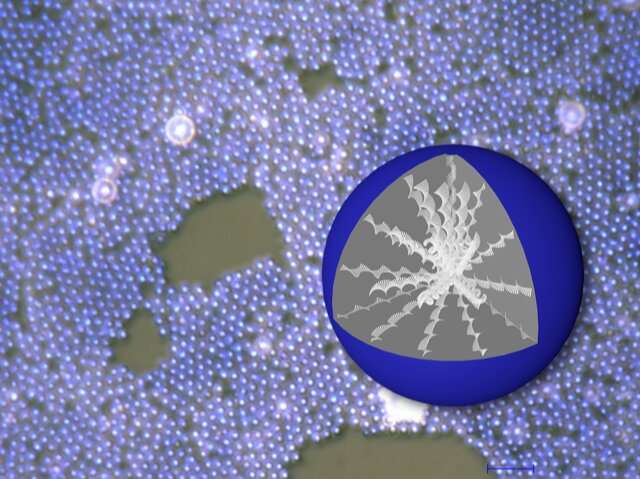Phys.org July 14, 2023
Cholesteric liquid crystals (CLCs) are becoming increasingly popular due to their unique chiral structural color. Unlike ordinary CLCs materials, CLCs particles exhibit angle-independence, making them particularly noteworthy. However, currently, there are limited effective methods for controlling the structural color of CLCs particles, other than adjusting the concentration of chiral dopants or introducing stimuli-responsive groups. Researchers in Japan
have developed a scalable and cost-effective process for preparing monodisperse CLCs particles via dispersion polymerization. By making CLCs into micrometer-sized monodisperse spheres, the helical pitch of CLCs could be varied according to its particle size, and the resulting structural color hue due to Bragg reflection could also be changed. Covering the CLCs particles with polydimethylsiloxane resulted in the formation of a polymer dispersed liquid crystals–like structure, which enhanced the structural color appearance and thermal stability of the CLCs particles. They developed a simple strategy to produce chiral anti-counterfeiting QR codes. By combining CLCs particles with commercially available pigments, an anti-counterfeiting QR code that can only be displayed under a specific circular polarizer was created. According to the researchers their approach and resulting CLCs particles expand the modulation of CLCs structural color and enrich the application of structural color in the field of chiral optical anti-counterfeiting… read more. TECHNICAL ARTICLE

Cholesteric liquid crystals (CLCs) display unusual colors due to their unique molecular structure and optical properties… Credit: Yukikazu Takeoka and Jialei He